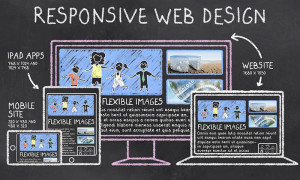Thinking About Redesigning Your Website For 2018?
 During this time of the year, my company Global Wire Associates starts to get calls from other businesses and nonprofits about getting help with reorganizing their digital strategy for the new year, namely their online presence. Websites play a central role in online marketing plans today, and now is a good time to start the process so you can have a brand new website up and running on New Year’s Day. How users interact with your site can make or break your business. Before you do the redesign, create a checklist of wants and needs for the website, conduct a content audit, and answer the following questions.
During this time of the year, my company Global Wire Associates starts to get calls from other businesses and nonprofits about getting help with reorganizing their digital strategy for the new year, namely their online presence. Websites play a central role in online marketing plans today, and now is a good time to start the process so you can have a brand new website up and running on New Year’s Day. How users interact with your site can make or break your business. Before you do the redesign, create a checklist of wants and needs for the website, conduct a content audit, and answer the following questions.
Has your mission statement changed? Usually, when the organizational goals and missions change, the website should also reflect this change as well. Is the current mission clear to all users when they come to your website?
Has the purpose of your website changed? This is slightly different from the company mission as this more relates to technical aspects. For example, do you want to sell products and services online? Then you have to redesign your website to support e-commerce.
Is your content working for you? After you do a content audit, you might realize that you need to clean up the website’s text, images, and/or video. Like we say here all the time, it really doesn’t matter how fabulous your website looks. If you don’t have great content on your site, most people will not only not care about your web presence, but they will also not care to learn more about you or your organization. Having high-quality content on your web presence is a top priority for establishing both your credibility and your brand.
Is your website usable? A great website is one where users can easily navigate it to find what they want and have a reason to stick around long enough to convert to or became more engaged customers.
What is your competition doing? You need to constantly keep track of what your competition is doing, and how you can get the competitive edge. Is there something you can do different that would get the attention of customers?
Is your website responsive? Google search engines are now giving higher rankings to websites that are mobile-friendly, or websites that can be viewed easily on mobile phones and tablets. A responsive website adjusts to different browser screen sizes, rather than to different devices, without compromising the quality of the content and site design. A responsive website is also a better return on investment for your website and your company’s marketing strategy.
Are you thinking about your 2018 digital strategy and need some help? Contact Global Wire Design at info(at)globalwireonline.org.


